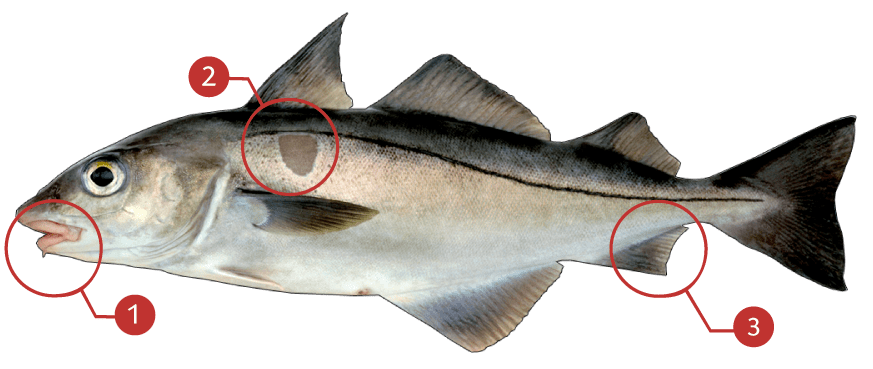HADDOCK
How to identify a Haddock
Haddock have a tapered, elongated body shape and are members of the cod family. The upper jaw extends beyond the lower jaw and the mouth is small and does not extend to below the eye. With three dorsal fins, there is a noticeable difference to the first dorsal fin which is triangular in shape and include approximately 14 to 17 fin rays. The second has approximately 20 to 24 fin rays, and the third 19 to 22. A haddock's body ranges from grey brown to nearly black while the lower part of the body is dull silvery white. A noticeable black lateral line curves slightly over the pectoral fins. Among the most unique features is the black blotch just above the pectoral fins. Dorsal and pectoral fins are normally dark grey with the anal fins coloured more similarly to the lower body coloration.
Where to catch Haddock
Haddock range across the north atlantic but are dominantly found in the eastern atlantic from the Bay of Biscay to Spitzbergen, to the English Channel. The North Sea, off Iceland and Norway support more modest populations. North American offshore waters include Cape Hatteras, Cape Cod and the popular Grand Banks.
IDENTIFICATION

| | The upper jaw extends beyond the lower jaw and the mouth is small and does not extend to below the eye |
| | A noticeable black lateral line curves slightly over the pectoral fins, a unique black blotch just above the pectoral fin |
| | Dorsal and pectoral fins are normally dark grey with the anal fins coloured more similarly to the lower body coloration (lighter) |
TARGET AREAS
|
|
Acknowledgements: We thank TAKEMEFISHING.org (www.takemefishing.org), Wisconsin Department of Natural Resources, Indiana Department of Natural Resources for their contributions to these FISH FACTS.

